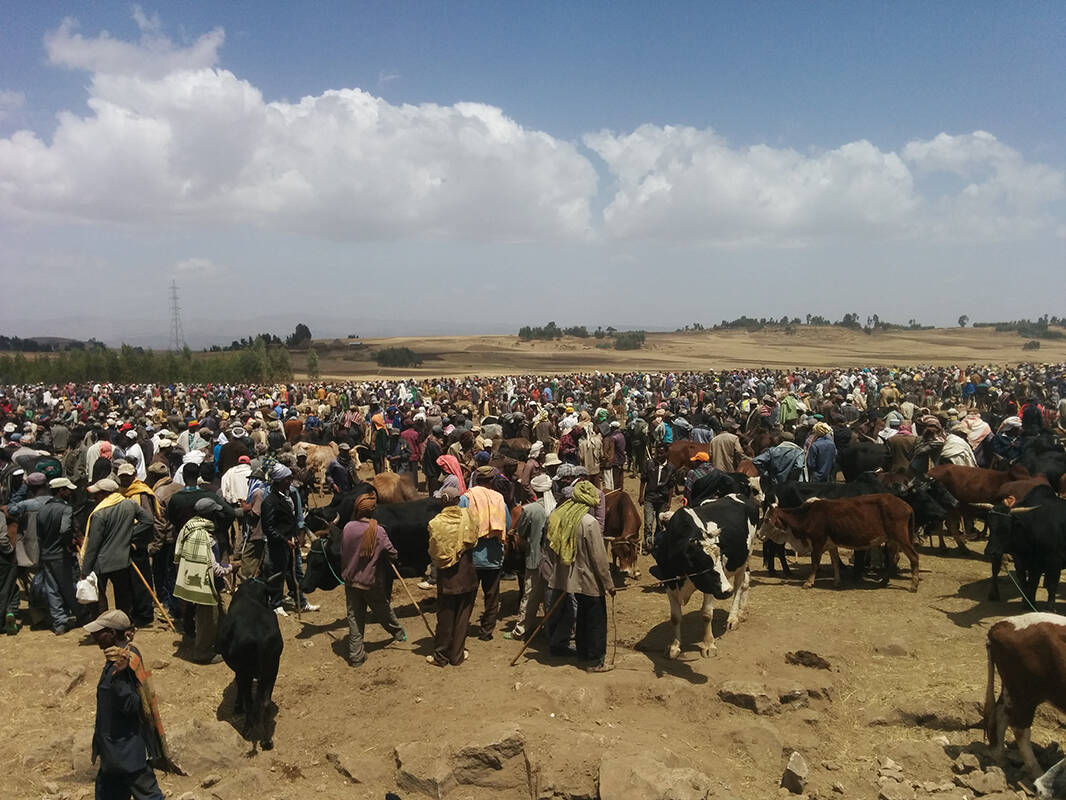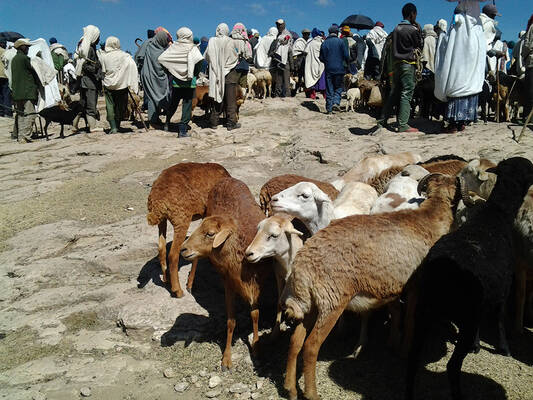The market services that Ethiopian livestock farmers are willing to pay for

It is thanks to the support of CGIAR's Research Program (CRP) on Livestock and CRP PIM that this work is made possible.
By Dr. Girma Kassie.
A recently published ICARDA study investigating rural farmers' willingness to pay for carefully identified livestock market facilities has revealed what services are the most valued.
In Ethiopia, about 120 livestock market centers are officially recognized by the government and agricultural institutions. Yet, these markets often do not provide basic amenities such as watering, feeding, resting, and quarantine facilities. Recognizing the vast, unexploited economic potential of the livestock sector, the government has renewed its effort to make the marketing system more efficient and accessible through enhanced infrastructure,The research addresses the lack of empirical evidence on farmers' interest in livestock market services, and their willingness to pay (WTP) for them.
Using discrete choice experiments (where farmers are given choices between experimentally designed markets) and collecting data on 360 randomly selected farm households in the highlands of Central Ethiopia, the research has generated important information on the priorities and demand for services of rural communities at a time when the government is actively looking to improve access to markets and the services they offer.

Among the facilities examined, farmers are most willing to pay for those listed below, in order of importance:
- Holding barns
- Water troughs
- Feed selling facilities
- Veterinary clinics
- Toilets
- Fenced market sheds
- Unfenced market sheds
Holding barns are facilities in which same-herd animals that accompany the marketable animals are kept, but not sold. The high importance of holding barns to farmers in the study, is due to the taxation system on market animals, which has always been a source of dissatisfaction to farmers, especially the more vulnerable smallholder farmers with smaller herds. In short, farmers are taxed a reasonable 3.15 birr (about 10 US cents) per animal if kept in holding barns, but up to 5 birr per animal at markets without holding pens, even if the animal is not being sold.
The study showed that farmers are willing to pay a premium for temporary holding barns that is 1.77 times higher than what they are willing to pay for water troughs at market. The WTP for holding barns is 1.74 and 1.23 times higher than the WTP for feed selling facilities and veterinary clinics, respectively. Similarly, the WTP for holding barns is 1.09, 2.0, and 2.27 times higher than that of toilets in the markets, fenced, and unfenced market shed, respectively.
The researchers emphasize that the preferences for the market facilities vary, with evident disparities in priorities among those who live close to the markets (and whose animals may not need market care), and those who travel from distant locations (necessitating extra water and more on-site animal care). Similarly, there is a difference in service preference between farmers who own small numbers of animals or large herds as the relevance of taxation and other costs change accordingly.

The study revealed that, although all market facilities, including services such as transportation and overnight storage, are considered necessary by rural market farmers, more attention should be paid to holding barns, market sheds, toilets, veterinary service, watering troughs, and feed stores.
In conclusion, the researchers recommend that, depending on the availability of resources, research informed rural development initiatives need to be put in place to design and implement market infrastructure development. By doing so, vulnerable segments of the community, unable to pay for higher animal taxes and offsite care, can still access markets and benefit from their core small ruminant production activities, further unlocking the economic advantages of better markets for the government.
Read the full paper (limited access)
---------
ICARDA would like to thank the CGIAR Research Program on Livestock (Livestock CRP), and CGIAR Research Program on Policies, Institutions, and Markets (CRP PIM) for the financial support for the above study.

--------------------

Dr. Girma Kassie is ICARDA's Senior Agricultural Market Economist



